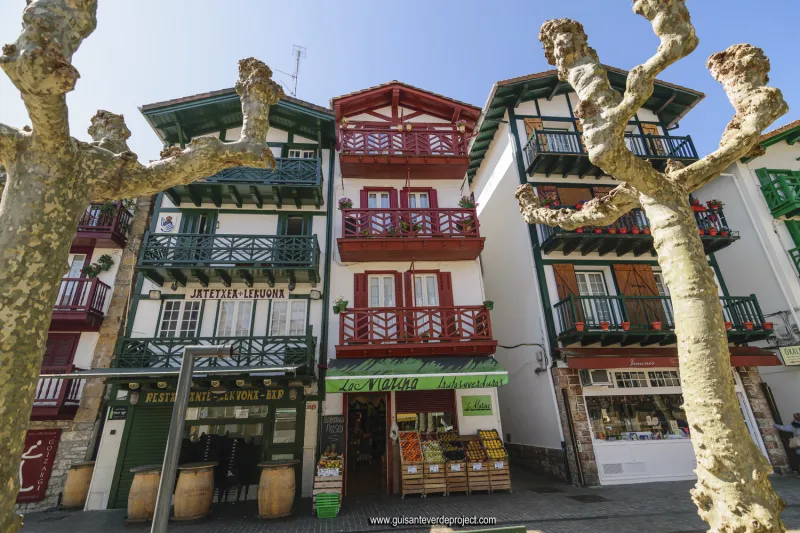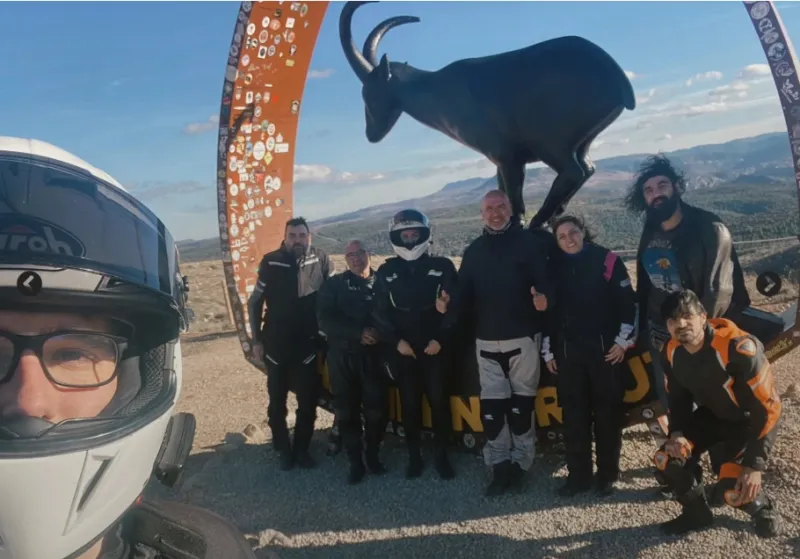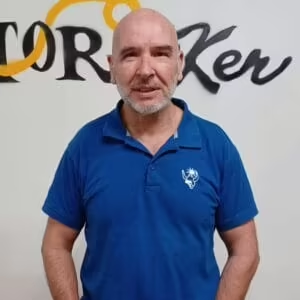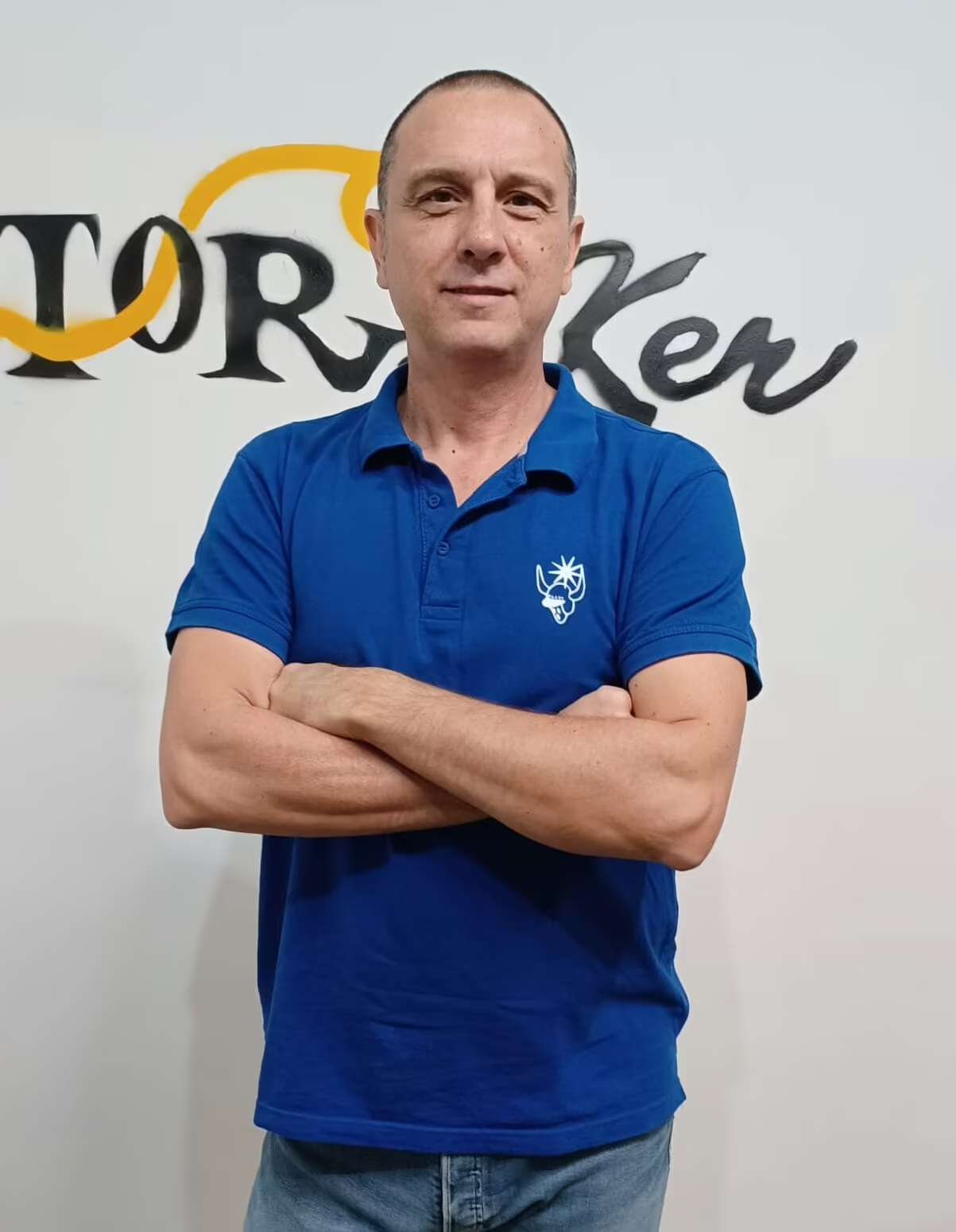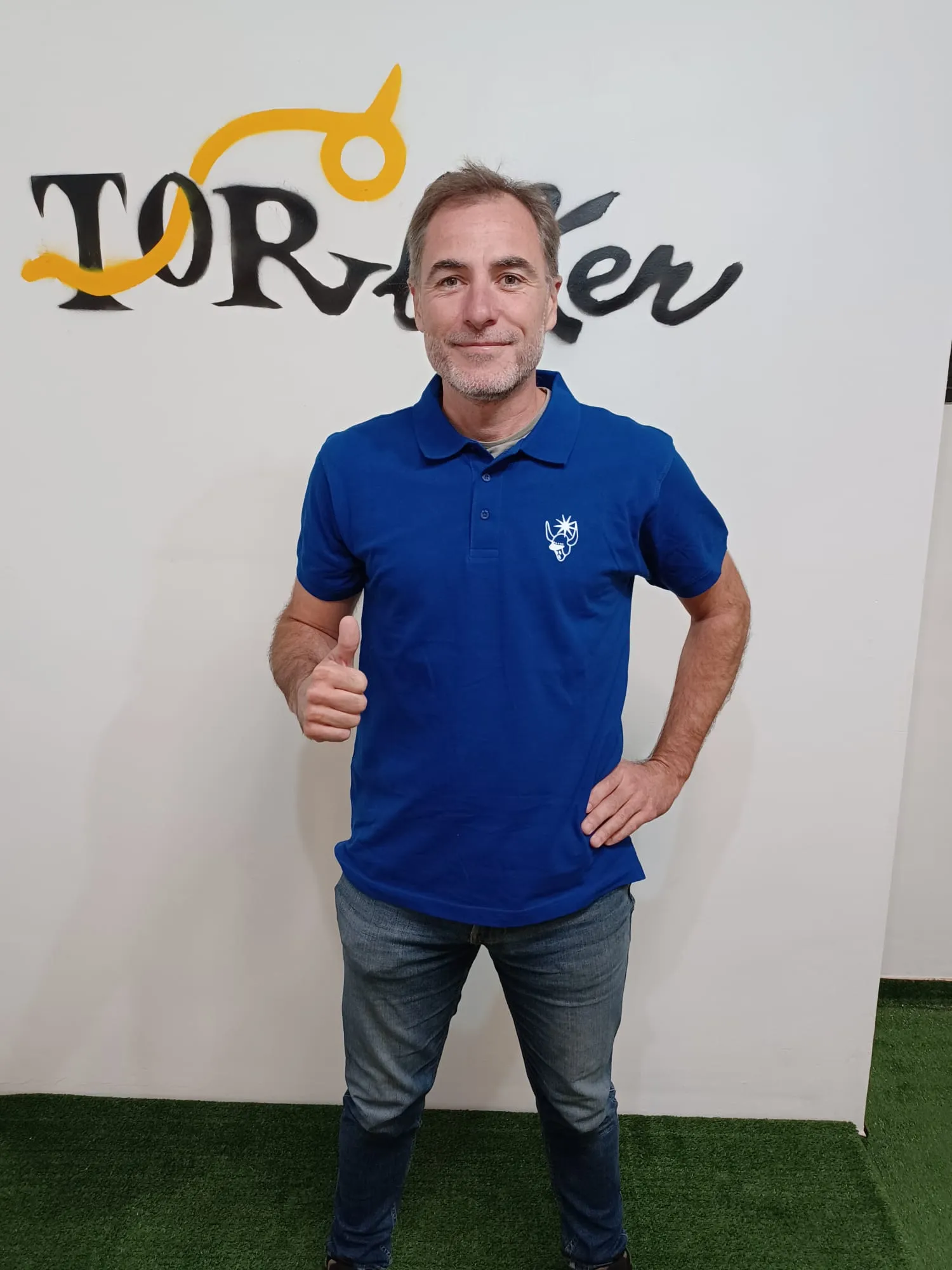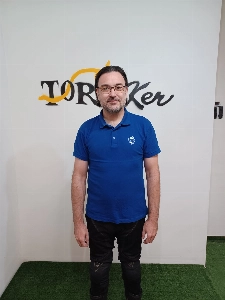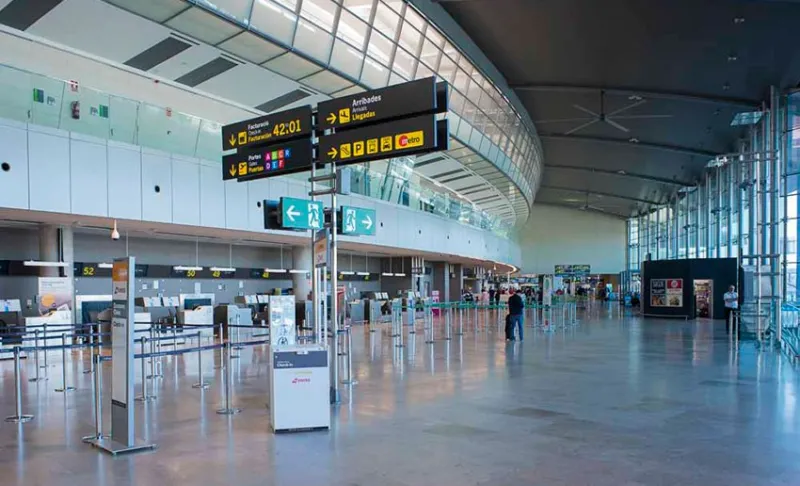
The first day, like in all our routes, serves as a framework for participants to arrive in Valencia, the starting point of the Route of Routes.
You’ll have until the afternoon to reach our city by whatever means you choose—train, plane, boat, car, or on your own motorcycle.
If you’re coming by public transport or rental car, we’ll pick you up at the station where you arrive or at the spot where you drop off your rental, and take you to the hotel where we’ll stay tonight. If you’re already geared up on your own bike, head straight to the hotel for check-in.
The hotel has private parking for motorcycles and offers several amenities, including a pool where you can cool off before the afternoon activities. It’s also perfectly located for the next day’s departure.
In the afternoon, once we’re all together, we’ll hand over the motorcycles to those who rented them, and then head off as a group to the Toro Biker offices in Paterna, where we’ll hold the trip safety briefing. If you’re on your own bike and want to skip the rental pickup, just go straight to the Toro Biker base and relax with a drink while you wait.
After the briefing, depending on the time, the plan is to take a short ride through the city of Valencia, visiting some of its most iconic spots and stopping for a few photos at the Torres de Serrano, the City of Arts and Sciences, and Malvarrosa Beach.
Either way, we’ll end the day with a welcome dinner at a restaurant near the hotel, an easy walk for everyone’s comfort.
After dinner and first impressions, we’ll head to bed to recharge for what’s coming tomorrow: the adventure is about to begin!
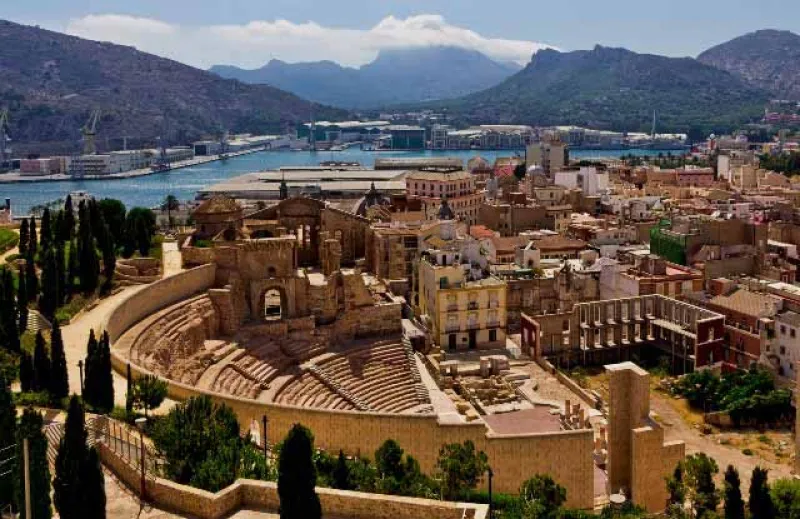
Let’s roll!
After breakfast at the hotel and following the safety guidelines we gave you yesterday, we’ll set off on a motorcycle route from Valencia to Cartagena under a “Sport-Touring” format. This means the roads will run through different landscapes alongside the Mediterranean, both along the coast and a bit inland, mixing flowing stretches that allow a quicker, smoother ride with sections where typical mountain pass curves take center stage.
On this first stretch, we’ll take part of the Wind Rose Route of the Region of Valencia, heading south. If you want to know more about this route, originally created by me for Toro Biker, you’ll find all the info on our website.
It’s important on this first day to get used to riding your motorcycle if it’s a rental —getting a feel for the weight with your luggage, how it brakes, accelerates, handles through curves, and basically all the inputs you need to process to truly connect with the machine that’ll be with you for this entire adventure. If you’re on your own bike, maybe it’s just about settling into the group’s rhythm and finding where you feel most comfortable. In either case, whether on your bike or a rental, it’s crucial to understand the pace set by the guide and how day two’s route unfolds, so you can adapt and enjoy the full experience to the max.
We’ll stop mid-morning to cool off and again around midday for lunch along the way —plus, of course, whenever we want to snap some awesome photos!
The plan is to reach Cartagena by mid-afternoon with time to freshen up, and we’ll try to squeeze in a short guided cultural tour before dinner.
We’ll have dinner at a place that lets us savor the local culinary delights, then get some sleep —tomorrow, the adventure continues!
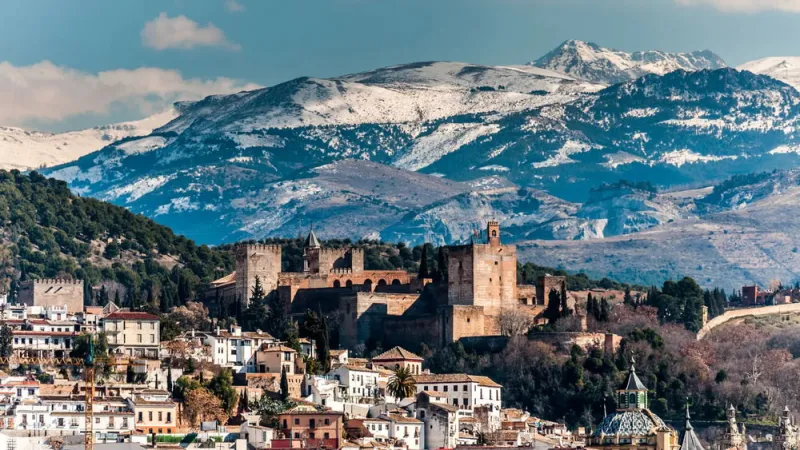
We start the third day of the route, having already shaken off the nerves of the first days and feeling our enjoyment steadily increase.
Today we’ll cover 425 kilometers on “Sport-Touring” roads, taking us from Cartagena all the way to Granada, riding part of the White Towns Route — the second big route we add to our journey’s achievements.
Curves, mountain passes, charming little villages — and speaking of charm, Granada itself, our destination for the day, is undoubtedly an extra incentive for any traveler. No matter how you arrive, this city welcomes you with an embrace that seems frozen in time. Arriving here on motorcycles has, at least for me, a “special charm” that the city seems to recognize and reward by offering its wonders to delight your eyes.
Strolling through Granada’s old town is always an experience that leaves no one indifferent. If you have even a slight knack for noticing the little details in its streets, you’ll truly enjoy this kind of time travel back to the Moorish culture that once ruled Spain.
We’ll arrive by mid-afternoon, as usual, with time to freshen up at the hotel and take a walk, hopefully with a local guide who can explain everything we see.
Dinner, of course, will be near the hotel at a restaurant serving typical local delights — or maybe we’ll go tapas bar hopping, depending on how tired we are. The great thing about trips capped at 10 motorcycles is that we can adapt on the fly and do whatever the group feels like at the moment. I’ve never liked “rigid” trips where everything is planned down to the last detail and no changes are allowed… obviously, the trips are planned and there will be a restaurant reserved for dinner, but if we’re walking around the old town and decide to eat tapas instead, I’ll cancel the restaurant reservation and we’ll eat wherever we feel like. I truly believe this is what sets our routes apart, one of the strongest points of the tours I design.
After dinner, wherever it may be, we’ll head to bed and rest — tomorrow we continue on to Faro!
350 km
06:00:00
Destination
San Lúcar de Barrameda
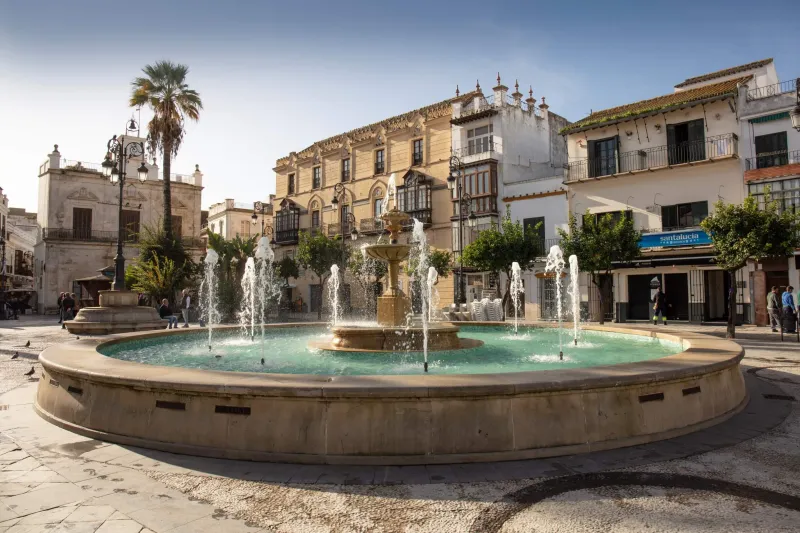
We leave behind the echoes of the past that fill the streets of Granada to begin today’s journey, which will take us to Sanlúcar de Barrameda — a small town with the scent of the sea woven into its very essence.
Despite its modest size, Sanlúcar was of great importance during the 15th and 16th centuries as a mandatory port of call for ships returning from the Americas laden with riches for the Spanish Crown. It became a sort of discreet “side gate” where the cleverest captains offloaded part of their treasures before officially delivering them in Seville after sailing up the Guadalquivir. No doubt, many fortunes were “born” in this town, where even today the old chimes seem to echo the arrival of ships from the ends of the earth.
We’ll enjoy the ride all the way to our destination, and once in Sanlúcar, we’ll let our imaginations drift back to those distant days when, after Columbus’s conquest of the Americas, the Spanish Crown reached its peak of glory — fueled in no small part by towns like the one we’re visiting.
Of course, we won’t miss the chance to savor the local culinary delights at dinner, after which we’ll return to our selected hotel to rest body and soul, lulled by the murmur where the Guadalquivir meets the Atlantic.
Origin
San Lúcar de Barrameda
489 km
08:00:00
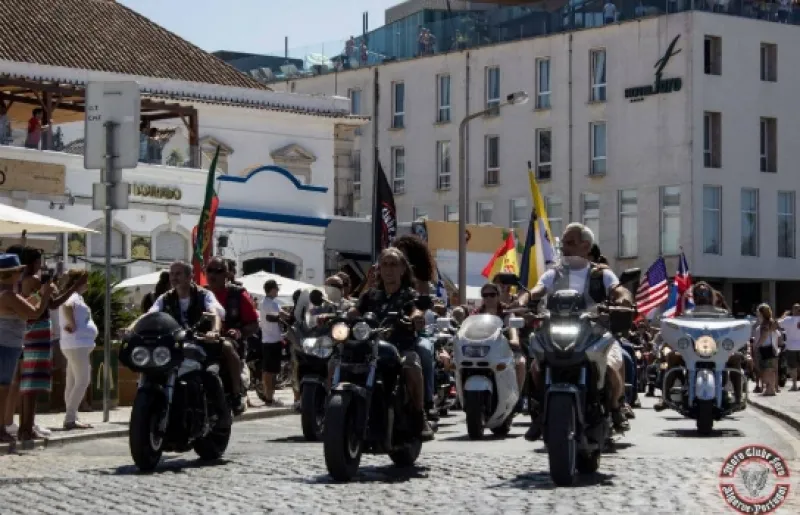
Today we tackle one of the longest and most fun stages of the route, taking us from the historic city of Sanlúcar de Barrameda to the world-famous southern Portuguese city of Faro.
When we talk motorcycles and Europe, Faro undoubtedly stands at the top in terms of fame. It’s without question the city that hosts, year after year, the largest biker rally in Europe, thanks to the excellent work of the Moto Clube de Faro — a non-profit organization founded in 1985 specifically to run this massive event. The numbers speak for themselves: in recent editions, between 20,000 and 25,000 bikers have officially registered, with total attendance surpassing 40,000… that’s a lot of bikes, a lot of history once again, and as they say around here: “…if you’re a biker, at least once in your life you have to go to Faro.”
With credentials like that, and considering we’re fully immersed in the “Route of Routes,” how could we possibly skip Faro?
That said, please keep in mind that the overall idea of this route is to “get a taste of everything” motorcycle-wise. Just like it’s tricky to ride all the named routes in full over 15 days, it would be absolute madness to try to hit Faro right during the rally. So we’ll visit it “off-season” to give you a feel for the place and make that essential stop at the “Mecca of European biking.” And if you absolutely love it, you can always come back for the rally on the dates they set each year — you’ll definitely have a blast.
This time, due to the distance, we’ll be arriving late in the afternoon, with just enough time to stroll around the city and enjoy our first Portuguese dinner of the trip. If you haven’t tried Portuguese cuisine before, let me tell you, it’s not all that different from Mediterranean or Spanish fare — the ingredients are basically the same. But without a doubt, it has that “something” that makes it truly special and incredibly delicious (and very reasonably priced, especially the seafood platters!). Maybe it’s the essence of the Atlantic? We’ll find out!
After dinner, as always, it’s off to bed — we’ve definitely earned it today.
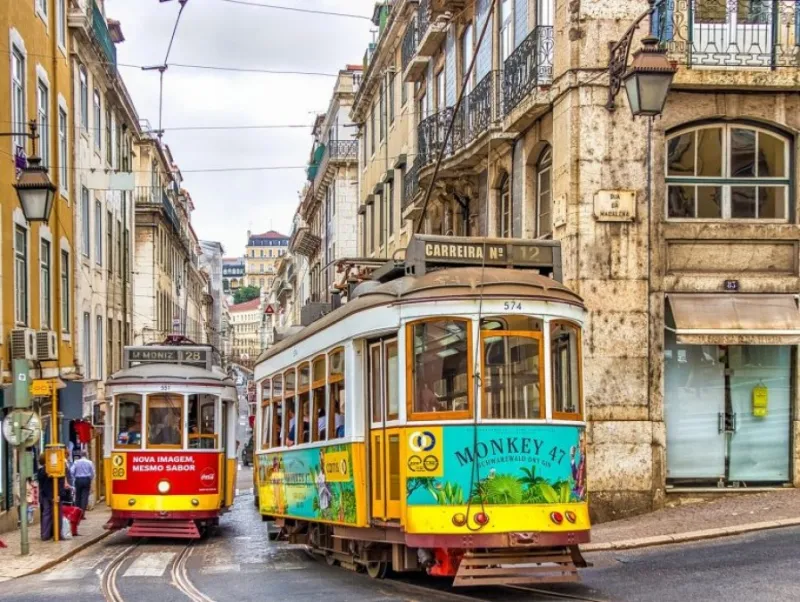
Today we’ll ease up a bit on the total kilometers, bringing it down to 330 so we can truly savor the first stretch of what is without a doubt Portugal’s most famous route: the N2.
We’ll ride it south to north to enjoy its layout and take in all the landscapes and little villages that look like they’re straight out of stories from long ago.
Of course, our arrival —which is also a must-stop— will be in Lisbon, the nation’s capital and the nerve center of that maritime history from the 15th and 16th centuries. Its port was the epicenter of global maritime trade at the time, competing directly with Sanlúcar and Seville. From here, Vasco da Gama’s expedition set sail, opening the trade route to India (the very idea Columbus tried but failed to achieve). Through this port flowed the wealth and exotic products from Africa, Asia, and Brazil. When it comes to stories of conquest, Lisbon certainly holds a special place.
We’ll get there with time to stroll around the port area, where the standout sight is without a doubt the 25th of April Bridge —one of Lisbon’s most iconic landmarks. It was inaugurated in 1966 and connects the Portuguese capital to the south bank of the Tagus River (which they call Teixo there). Its design clearly resembles San Francisco’s Golden Gate Bridge —and that’s no coincidence, since it was built by the same American company, the American Bridge Company. Think copy-paste is a modern invention? This bridge proves it’s not at all… Fun fact: it’s roughly 2,277 meters long, making it one of the longest suspension bridges in Europe. Did you know that?
Here, we simply can’t miss the chance to feast on seafood —it’s totally worth it. But if someone’s already “full up” on seafood after Faro, the meats here are just as delicious. We’ll decide on the fly!
After dinner, it’s off to sleep at our carefully chosen hotel. More awaits us tomorrow!
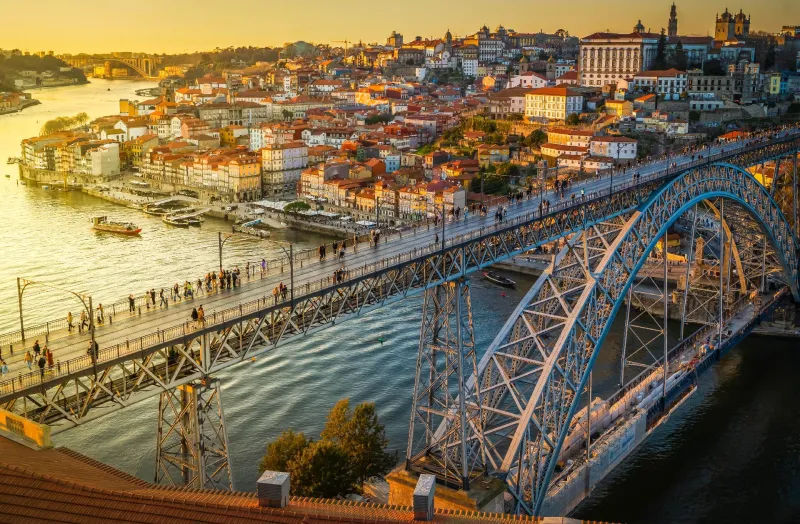
We hit the road again with energy to enjoy the second leg of Portugal’s N2, which will take us to the charismatic city of Porto, where the Douro River — one of the rivers that begins in Spain — meets the sea. They call it “Duoro.”
One of the city’s highlights is undoubtedly its Port wine, with its centuries-old cellars where it ages and develops its distinctive flavor.
The city has become a charming labyrinth of cobbled streets with colorful facades leading down to the river. Its historic center has been declared a UNESCO World Heritage Site, culminating at one of its iconic landmarks: the Dom Luís I Bridge. This bridge was designed by Théophile Seyrig, a Belgian engineer who was both partner and disciple of Gustave Eiffel. Although in this case, the clearest resemblance between the two structures is definitely their pioneering wrought-iron framework, which gave birth to both icons. Here, unlike before, we definitely can’t say there was any copy/paste... ;-)
After our usual afternoon stroll upon arrival, we’ll treat our palates to local cuisine, including dishes like francesinha, bacalhau (cod prepared in every imaginable way), and, of course, a perfect pairing with Port wine.
We’ll dine, surely laugh as we share stories from the road, and then head to rest at the carefully selected hotel to end the day.
480 km
08:00:00
Destination
Santiago de Compostela
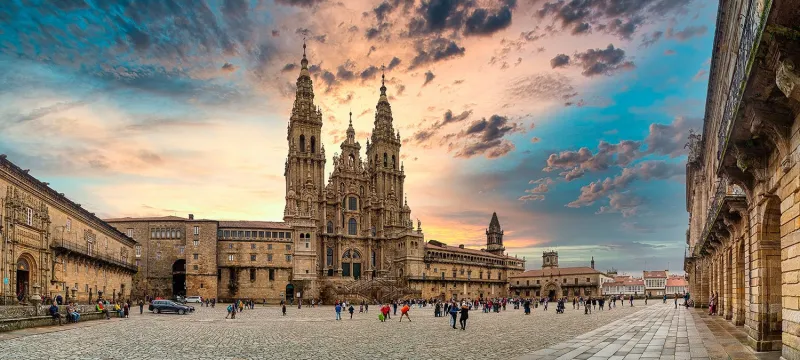
We leave behind Portugal with its N2 to fully enter the magical and mystical Galicia.
One of the most awe-inspiring stops of the experience will be in Finisterre: the lighthouse at the end of the world. For centuries, this place was considered the edge of the habitable earth, and if you’ve never been, I assure you that every time I’ve gone, the raw nature of its cliffs, carved relentlessly by the Atlantic’s waves, and the overwhelming sight of the vast ocean will leave you breathless. It’s a place reached by a short walk to the lighthouse, chatting and calmly taking it all in. Once you arrive at the tip of the hill, it invites silent contemplation of the ocean’s vastness in full force. Not long ago, there was barely even a road to get here, but now there’s even a small restaurant — I guess that’s what they call progress and modernity.
After nourishing our souls with this stop, we’ll hit the road again to reach our destination: Santiago de Compostela.
If any place, regardless of religious beliefs, breathes an unmistakable touch of “magic,” it’s definitely this city. The final point for pilgrims walking the world-famous “Camino de Santiago,” it will serve us to start it in reverse… funny, right? The N2 from south to north, and the Camino de Santiago from its endpoint back toward one of its starting points (although the Camino always ends at Santiago de Compostela, it has several starting points depending on where you want to begin: the French Way, the Northern Way, the Southern Way, and now there are even routes starting from Valencia, Seville, and many others… gotta take advantage of the economic boom, right?).
Anyway, the truth is the sight of the main facade of Santiago Cathedral is something that moves the soul no matter your creed.
We’ll go see it and then treat ourselves to a royal culinary feast in one of the hundreds (if not thousands) of restaurants packed into the city, all eager to offer their best dishes to the millions of travelers who flood Santiago every year.
After dinner, it’s time to rest, because today’s stage will surely be exhausting. We knew this experience was for expert riders, and without a doubt, it will put all of us who enjoy it to the test — just so you know! Scared? I don’t think so…
Origin
Santiago de Compostela
335 km
06:00:00
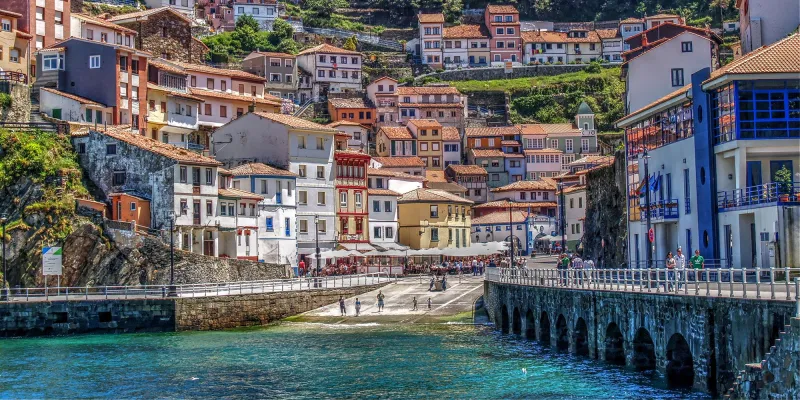
We start the ninth day leaving Santiago de Compostela, heading for the road that will take us straight to the Cantabrian coast, where we’ll make our first stop of the morning in Foz for a bit of snorkeling—provided the timing of our trip allows it. Keep in mind that the Cantabrian Sea is usually quite cold, and autumn and winter aren’t exactly the best seasons for a swim (speaking from personal experience!). But let’s assume we’ll be able to do it (even if we have to catch our breath as we jump in) and enjoy it to the fullest, because it’s truly amazing to try this simple activity that requires no previous experience and lets you instantly discover all the marine life surrounding this charming spot: Foz.
Remember to pack your swimwear if you want to join in. Of course, the activity is totally optional—if you prefer, you can simply wait until it’s over and enjoy some free time. Foz is a small but lovely town where you can take a seaside stroll, sip a cold beer while gazing at the water, or just sit on a bench and soak up the sun.
The idea behind this stop is to “break up” the routine most motorcycle tours fall into: just riding and nothing else. Sure, we all love being on the bike, but we also enjoy doing something different now and then—at least I do! And snorkeling in Foz with a local marine guide is something I’m absolutely excited about. The route takes us right there, so we’re going to make the most of it!
Keep in mind that this activity is not available on all route dates due to low water temperatures at certain times of the year. We don't want anyone freezing!
After lunch in Foz, we’ll continue along the coast toward Cudillero. Riding with the vast sea on your left and, at certain points, mountains rising dramatically to your right is hands down one of the coolest sensations of the entire trip, trust me.
Cudillero is a fishing village whose old town is laid out like a natural amphitheater descending toward the harbor, the heart of local life. Its brightly colored houses, stacked in terraces on the hillside, create a unique view that has inspired painters and photographers from all over the world. Without question, this will be one of the absolute best photo ops of the entire trip—thanks to its vibrant colors and originality.
As always, we’ll enjoy dinner at a carefully selected restaurant and then get some rest—there’s still plenty of adventure ahead!
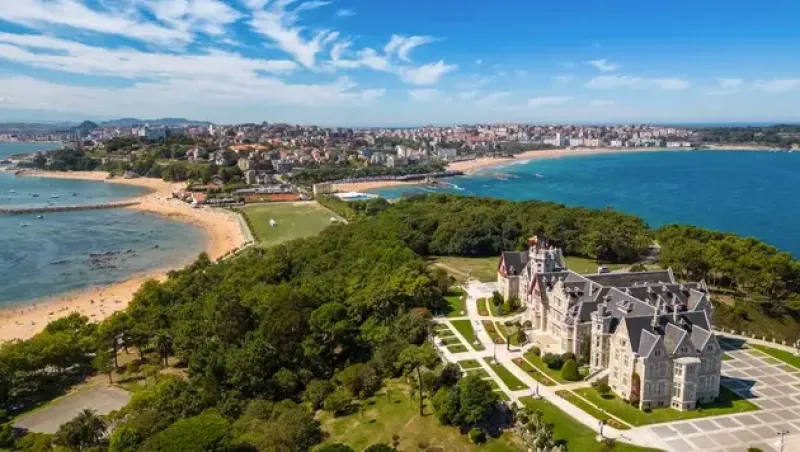
The second stretch of our unique “Reverse Camino de Santiago” takes us along the inland side of the route, riding roads that feel almost wild, with vegetation so lush it sometimes seems to swallow us up. It’s a true feast for the eyes and an absolute joy for riding our bikes.
And what can I say about Santander? For me, it feels like a brand-new city every time I visit. Strolling along Playa del Sardinero is like stepping back into its golden age. The Gran Casino de Santander, the Hotel Sardinero, and the charming Emilio Pardo Palace stand as silent witnesses to the city’s best years—and even today, they showcase the grandeur of local architecture. Sure, you can tell these buildings are from another era, but that doesn’t make them any less beautiful to behold.
Dinner simply has to be right there on the promenade, at one of the restaurants with terraces overlooking the beach. And honestly, not ordering some “rabas” (fried squid), tuna from the Cantabrian Sea, or Santoña anchovies is almost a sin—so let’s savor the sea right at the table!
After dinner, well-deserved rest at our carefully selected hotel to recharge for the final stretches of this journey, which is undoubtedly going to be epic. Just describing it so you can experience it already has me savoring it—are you too? I bet you are!
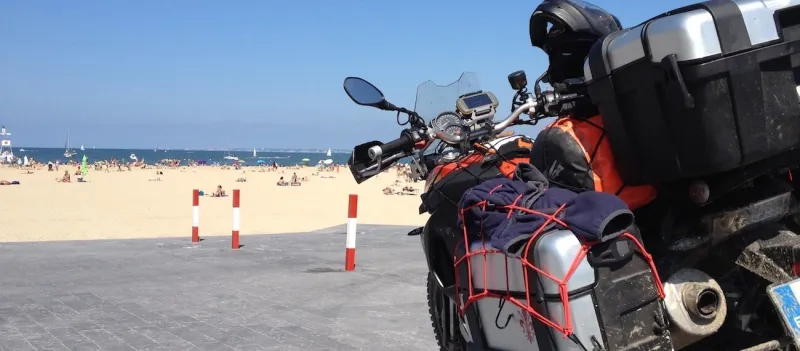
We head inland (don’t worry, we’ll be back by the sea soon) to enjoy this amazing stretch that takes us at our own pace along roads through the Izki Natural Park in the heart of the Basque Country, home to the largest Pyrenean oak forest in Europe—a visual spectacle that’s hard to beat.
We’ll make our usual stop for lunch midway, then continue leisurely on to Hondarribia. Now, here’s where I have to confess something: when designing this route, I had my doubts. Let me explain... Sure, this charming fishing village marks our return to the Cantabrian Sea and is undoubtedly a classic endpoint for any version of the so-called “Trans-Pyrenean Routes” (because honestly, there isn’t just ONE official Trans-Pyrenean Route—there are almost as many as there are bikers who’ve ridden them. Each one creates, plans, and rides it their own way, which I personally think is fantastic, for the record!). But I also believe the prices for an overnight stay here are way too high for what you actually get—especially considering that just a few kilometers away, across the border in France, there’s the town of Saint-Jean-de-Luz. It’s just as charming, with the same fishing village vibe, and you can get a hotel with similar features for practically half the price. And no, it’s not that I don’t like spending money. I’ve been traveling by motorcycle for decades, and I completely understand you have to spend to enjoy the trip. But I also know the difference between spending and wasting money—and on that, there’s really no argument. After riding nearly 400 km today, are we really going to shy away from going 20 more just to sleep? I think we’d both answer the same. Of course not!
So, after taking our photo in Hondarribia as a lasting memory of reaching the “end” (or “turnaround point”) of the Trans-Pyrenean Route starting from Spain, we’ll head over to Saint-Jean-de-Luz for dinner and a good night’s sleep. Then we’ll be all set to tackle the Trans-Pyrenean stretch of our epic adventure tomorrow.
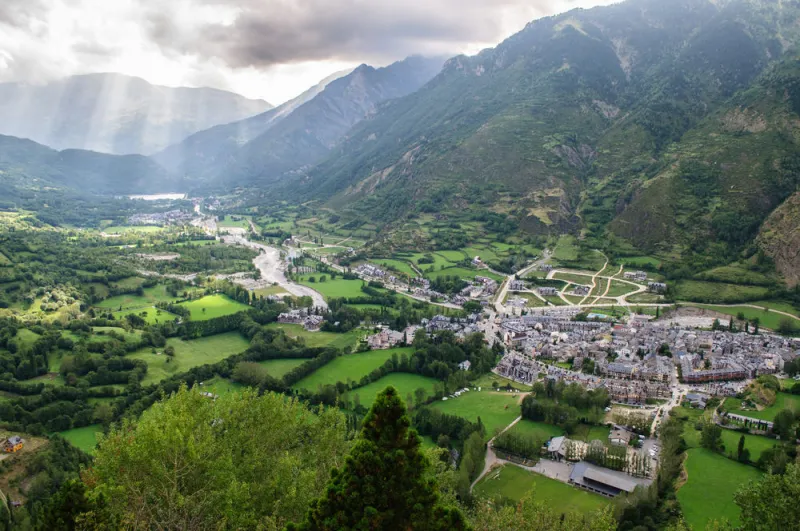
Day 12 on the road, and I think now is the perfect moment to define what we mean by “Trans-Pyrenean Route”: it’s basically any motorcycle journey that, starting wherever you wish, passes through a town on Catalonia’s northern coast to “touch” the Mediterranean side, then winds along both sides of the natural border formed by the Pyrenees between France and Spain, eventually reaching the Cantabrian Sea—usually, as I’ve said, in Hondarribia in the Basque Country.
From there, it doesn’t really matter which town on Catalonia’s coast you start from, or which villages and mountain passes (“puertos” in Spain, “colls” in France) your route includes. The key is simply traveling from the Mediterranean to the Cantabrian—or the other way around—depending on your starting point.
With that clear (and you can search “Trans-Pyrenean Route” to see I’m not making this up!), everyone plans their own version wherever they fancy, and that’s it—time to enjoy.
Of course, Toro Biker had to create its very own take on the Trans-Pyrenean, and I designed our unique route back in the day. You can find all the details on our website in case you’re tempted to ride it with us!
Anyway, back to Day 12: today we start in France, playing around with those beautiful passes and “colls” straddling the Spanish-French border. These roads stand out for the sheer majesty of the Pyrenees and the incredible number of curves per kilometer—today is all about riding pleasure at 100%. Pure motorcycle bliss.
Naturally, we’ll stop for lunch along the way and savor typical mountain dishes: hearty stews, game meats, snails... Though beware—portions around here are famously generous. It’s almost an insult to leave a local inn or restaurant hungry! Still, keep in mind we have quite a few kilometers left to reach Benasque, and if you overdo it, you might suffer instead of enjoying them...
By mid-afternoon we’ll roll into the picturesque village of Benasque, where cobbled streets, flower-filled balconies and its innate calm welcome us with that classic Aragonese warmth. In winter, the ski slopes give the town a lively buzz, slowing down to a gentler rhythm in spring and summer. No matter when you arrive, it’s impossible not to feel small gazing up at the towering mountains that encircle it.
After freshening up at the hotel, we’ll take a stroll to stretch our legs, then head to dinner—and this time, feel free to eat until you burst! 😄
After dinner, it’s off to bed to rest up and tackle the final leg of this epic journey with plenty of energy.
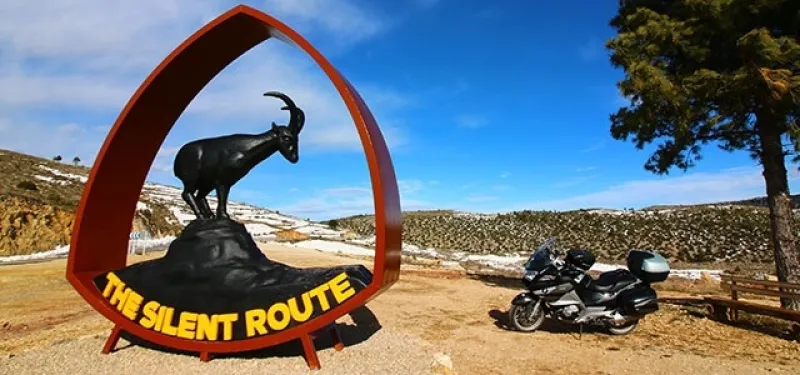
After breakfast, with the peace of Benasque’s towering mountains still in our hearts, we head south along roads that will continue to thrill even the most seasoned riders, until we reach Venta la Pintada. From there, we begin the 63 kilometers along the A-1702 that wind between the regions of Maestrazgo and Andorra-Sierra de Arcos.
I have to tip my hat to the brilliant minds behind the “Silent Route.” In just a few years, they’ve managed to put a motorcycle route on Spain’s map that’s only 63 kilometers long. And not just in theory—they’ve truly brought it to life with the simple philosophy of “slow driving,” of which they are proud ambassadors. Hats off to the Silent Route.
The curves, the scenery, the nature all around you—and above all, that profound silence you feel when you stop to snap a photo with the famous goat (the route’s logo) or, more recently, the biker glove waving its greeting—it all forms a unique experience that I honestly believe every rider should enjoy at least once in their life.
Don’t forget to bring your motorcycle club sticker to add to the panels set up for that purpose near the clearing where the goat seems to stand watch over the passage of time. We’ll of course take our own photos—your biker photo album just wouldn’t be complete without a shot with the Silent Route goat!
We stop for the night in Villarluengo, arriving in the mid-afternoon. We'll take a stroll to enjoy the peaceful atmosphere, have dinner savoring the local delicacies, and then head to bed with the same tranquility that welcomed us at the start of the day.
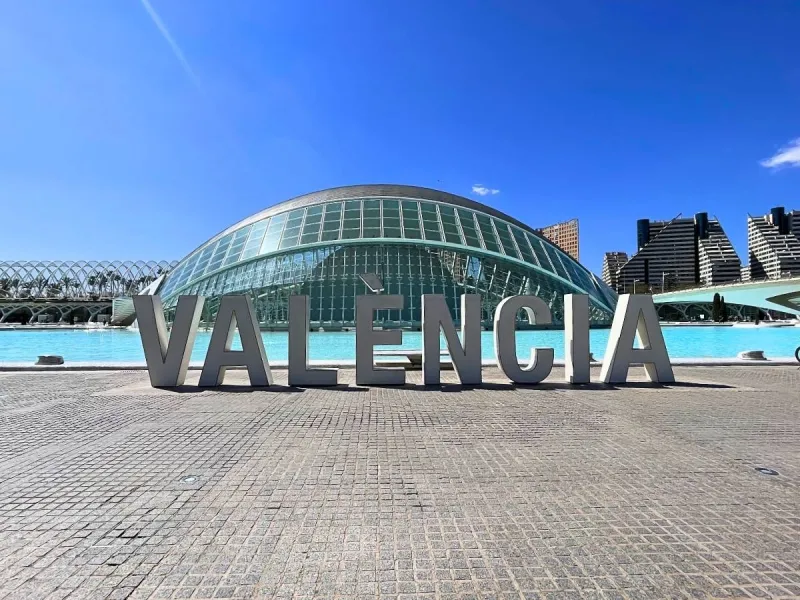
With our batteries fully recharged, today we’ll enjoy the remaining stretches of the Silent Route. And sure, we could take the easiest and fastest road to reach the northern point of the Rose of the Winds... but honestly, who’s in a rush to get there?
Exactly—curves and more curves, squeezing every last drop of joy out of our Route of Routes, which now returns to the Valencian Community from the north. We’ll make the most of it by stopping for lunch in one of the inland villages, where our taste buds will delight just as much as we will riding those twisties, sampling the local cuisine.
We head back to our starting point where the same hotel awaits us. There we’ll freshen up for the last night of this route. The rides may be over, but the Route of Routes isn’t done just yet: get ready to enjoy one final night in the city of Valencia, named the “best city in the world to live in” in 2024. Must be for a reason, right?
At this stage, I want to lay out two options to wrap up our experience in style.
The first option is dinner with a live flamenco show. That’s right—Valencia actually has a strong flamenco tradition. I can personally vouch for it, having once even earned myself a “palmero flamenco” diploma—but that’s a story for another day over coffee... After dinner, Valencia’s nightlife will welcome you with open arms. The city buzzes at night: from the center and the old town to the Ruzafa district, Cánovas, Avenida de Aragón, and of course the Malvarrosa beach area. I doubt we could exhaust Valencia’s party scene in just one night, so we’ll take it step by step—and whoever holds out the longest can turn off the lights on their way out!
The second option is dinner at one of Valencia’s oldest restaurants—honestly one of my favorites, both for the atmosphere and the food. It’s by the port, so after dinner we’ll let ourselves be carried away by the murmur of the sea and enjoy the vibe at Malvarrosa beach. For the true night owls, even that won’t be enough for a single night. No worries—Valencia’s cultural and leisure offerings are vast and varied, so like before, we’ll pace ourselves. And whoever lasts until dawn will get another great photo for the trip album.
No need to “save energy” tonight—tomorrow we can sleep in until hotel checkout time. So let’s enjoy Valencia à la nuit to the fullest!
Everyone to bed at their own pace, and tomorrow’s another day.
I can’t wrap this up without a friendly reminder to those riding their own bikes back home the next day: please take it easy with the partying. What matters most is getting home safe, and riding safely. A motorcycle with a hangover is no fun at all—fair warning!
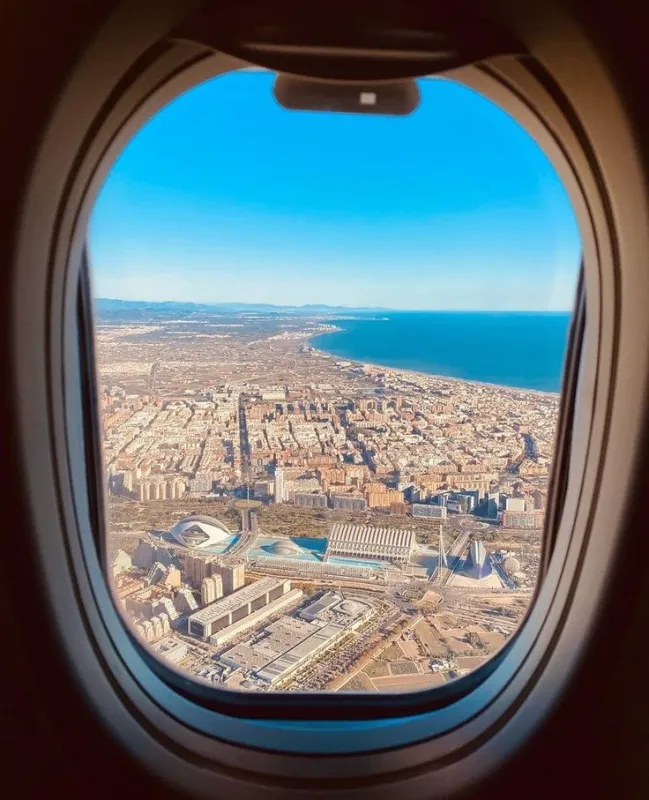
At checkout time (and not before), we’ll gather in the hotel lobby to say our goodbyes together.
Like many people, I personally hate farewells—especially the long, emotional ones—so we’ll keep it short and simply say “see you next time” to those heading off on their return journeys home, before any tears start to fall. We’ll also accompany those who rented motorcycles to drop them off, then take them back to the pick-up point where we all met on the first day.
Of course, we’ll coordinate each person’s drop-off times according to their individual departure schedules, depending on how they’re leaving Valencia. No one will ever be left waiting alone for hours at an airport or train station—promise, that’s the Toro Biker way!
As this experience comes to an end, all the memories will start bubbling up: the funniest moments, the roads, the landscapes, the quirky stories, that special light in that hidden village, the history we’ve witnessed firsthand, the culture we’ve lived, the unique gastronomy... it all becomes part of our biker soul—a place with unlimited room for adventures like this one.
See you on the next ride, so we can keep stacking up amazing experiences!
Ride safe.
























